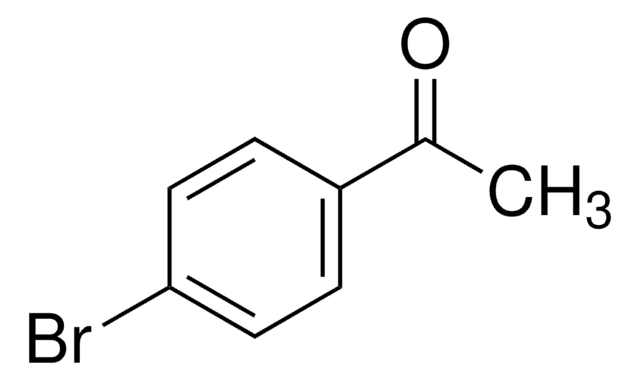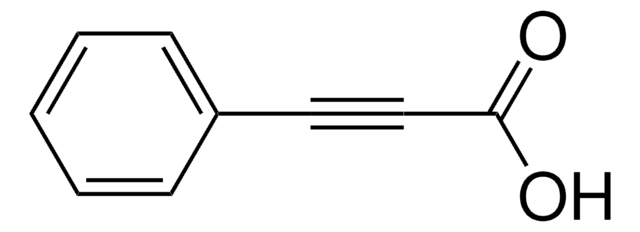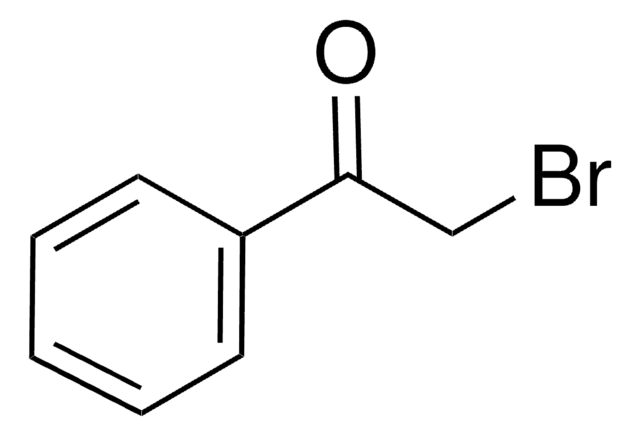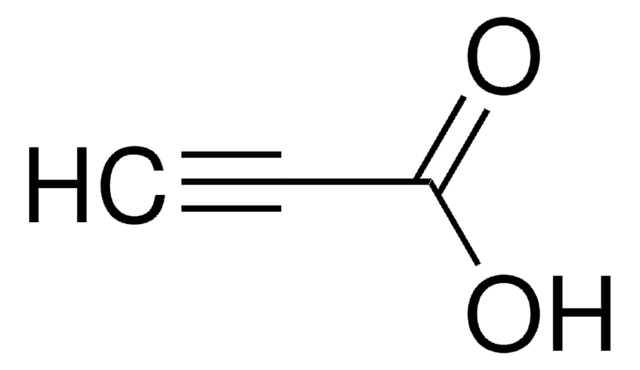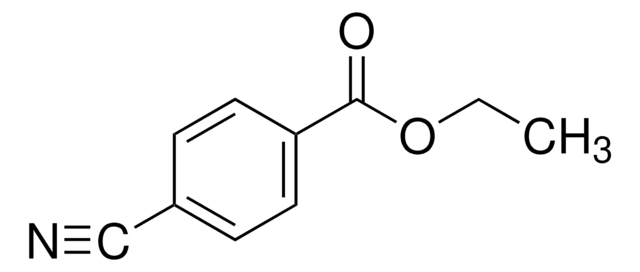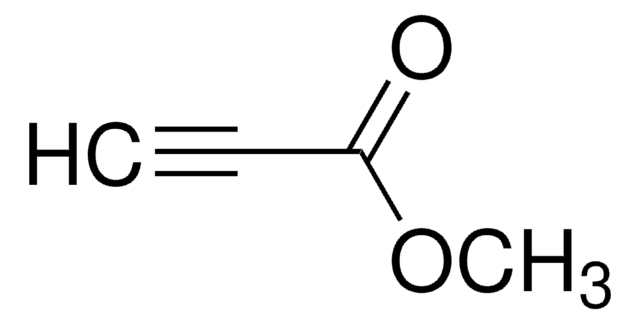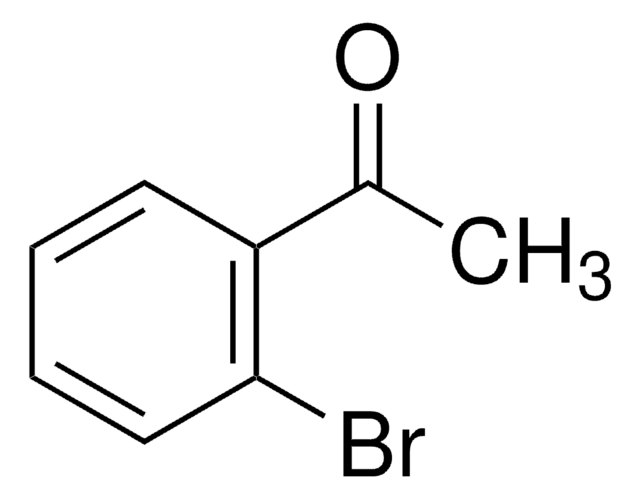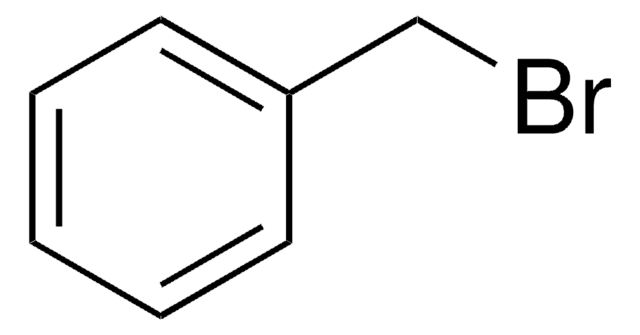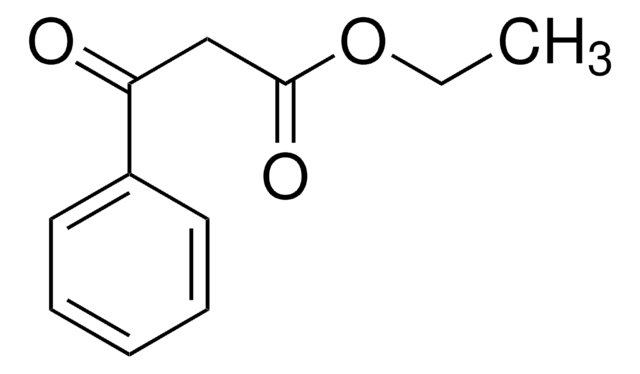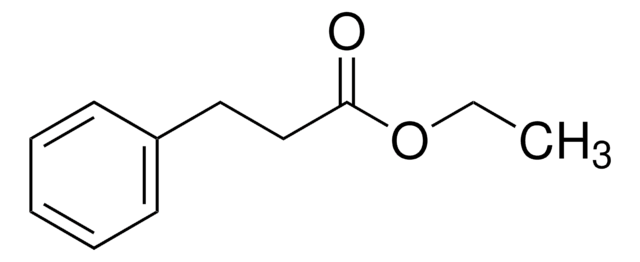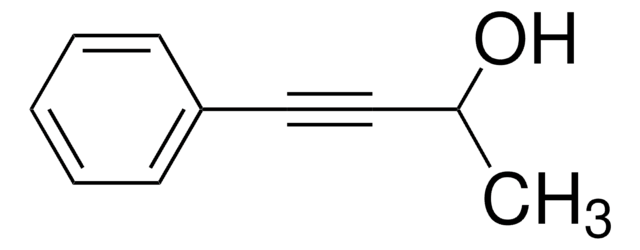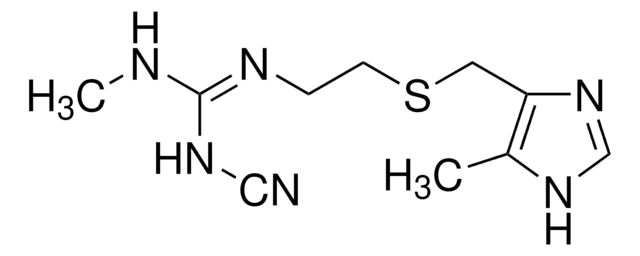All Photos(1)
About This Item
Linear Formula:
C6H5C≡CCOOC2H5
CAS Number:
Molecular Weight:
174.20
Beilstein:
639637
EC Number:
MDL number:
UNSPSC Code:
12352100
PubChem Substance ID:
NACRES:
NA.22
Recommended Products
Quality Level
Assay
98%
form
liquid
refractive index
n20/D 1.552 (lit.)
bp
260-270 °C (lit.)
density
1.055 g/mL at 25 °C (lit.)
storage temp.
2-8°C
SMILES string
CCOC(=O)C#Cc1ccccc1
InChI
1S/C11H10O2/c1-2-13-11(12)9-8-10-6-4-3-5-7-10/h3-7H,2H2,1H3
InChI key
ACJOYTKWHPEIHW-UHFFFAOYSA-N
Looking for similar products? Visit Product Comparison Guide
Related Categories
WGK
WGK 3
Flash Point(F)
Not applicable
Flash Point(C)
Not applicable
Personal Protective Equipment
dust mask type N95 (US), Eyeshields, Gloves
Certificates of Analysis (COA)
Search for Certificates of Analysis (COA) by entering the products Lot/Batch Number. Lot and Batch Numbers can be found on a product’s label following the words ‘Lot’ or ‘Batch’.
Already Own This Product?
Find documentation for the products that you have recently purchased in the Document Library.
Customers Also Viewed
Ampai Panthong et al.
Journal of ethnopharmacology, 91(2-3), 237-242 (2004-05-04)
Methanolic extracts from the heart wood, stem bark, and stem wood of Ventilago harmandiana Pierre (Family Rhamnaceae) were assessed for anti-inflammatory effects using both acute and chronic inflammatory models. Analgesic and antipyretic activities of the extracts were also evaluated. It
C McGaughey et al.
Journal of toxicology and environmental health, 11(3), 467-474 (1983-03-01)
Tumor initiation by topical application of 7,12-dimethylbenz[a]anthracene (DMBA) in dimethyl sulfoxide (DMSO) followed by topical application of retinyl acetate (RA), ethylphenylpropiolate, or acetic acid in DMSO at inflammatory and hyperplasiogenic dose regimens caused the rapid promotion of fibrovascular polyps with
P Claeson et al.
Planta medica, 62(3), 236-240 (1996-06-01)
The topical anti-inflammatory activity of three non-phenolic linear 1,7-diarylheptanoids, previously isolated from a Thai medicinal plant, Curcuma xanthorrhiza (Zingiberaceae) and four new semi-synthetic derivatives of the naturally occurring compounds were assessed in the murine model of ethyl phenylpropiolate-induced ear edema.
Tsugio Kitamura et al.
Nature protocols, 2(4), 845-848 (2007-04-21)
This protocol describes the synthesis of 6,7-methylenedioxy-4-phenylcoumarin from sesamol and ethyl phenylpropiolate using a Pd(OAc)2 catalyst to illustrate coumarin synthesis. This procedure is simple and easy and can be applied to the synthesis of other coumarins that have electron-rich phenol
K A Davidson et al.
The Journal of investigative dermatology, 79(6), 378-382 (1982-12-01)
Glucocorticoids (anti-inflammatory steroids) are very potent inhibitors of mouse skin tumor promotion induced by 12-O-tetradecanoylphorbol-13-acetate (TPA). This report describes a high-affinity, limited-capacity binding component which specifically interacts with glucocorticoids and which is identified as a glucocorticoid (GC) receptor present in
Our team of scientists has experience in all areas of research including Life Science, Material Science, Chemical Synthesis, Chromatography, Analytical and many others.
Contact Technical Service